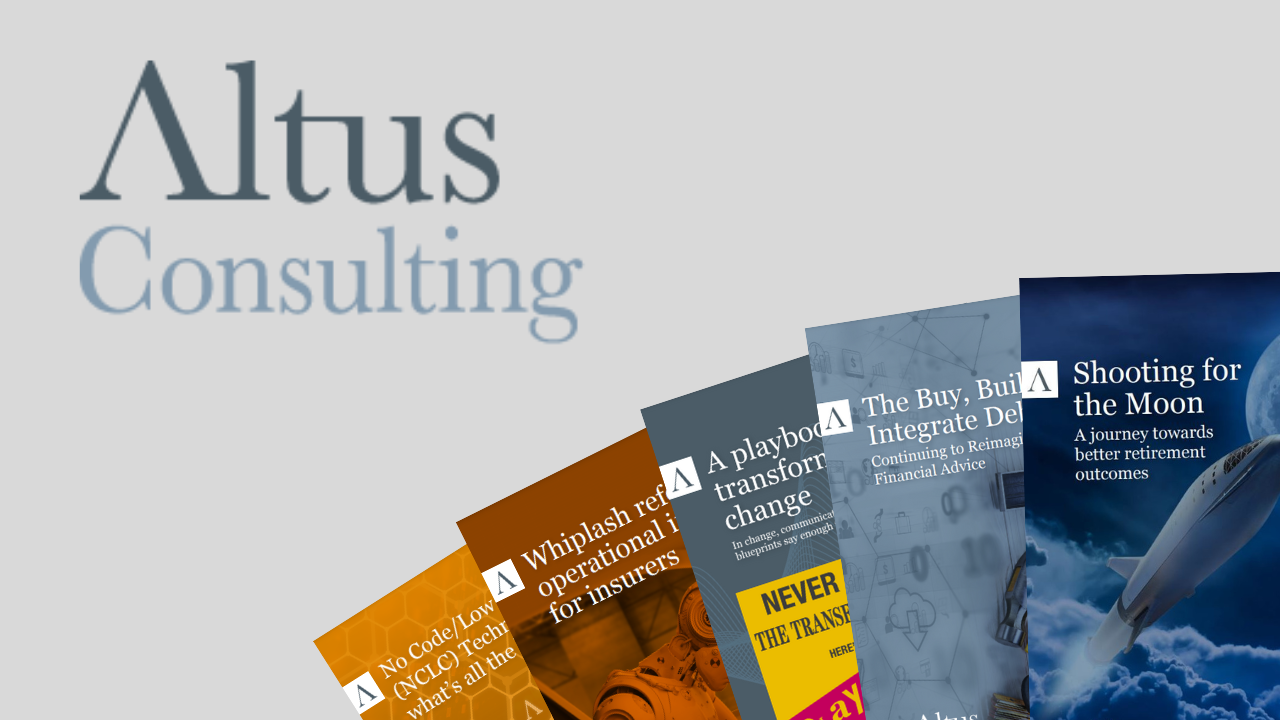I joined Altus Consulting as part of their Academy programme in January last year, and in the time that I have been here, a lot of the work I have done for clients has involved mapping the as-is estate.
Maps are a good way to think about technical collateral. When any entity, including an individual or a company, wants to go somewhere or do something, they first need to understand where they are. They can then chart a route from their current position to their goal position. Your route to Bath is going to be very different if you are coming from Leeds than if you were coming from Exeter, for example. Just like route navigation for individuals, once a company has decided on a goal objective such as ‘cut costs by 10%’ or ‘replace the existing Policy Administration System’, they then need to identify how to get there from their current position.
This is one example where having existing technical collateral would be useful. Change in business is a fact of life and, as common as it is, it is not always simple. This is especially true when talking about complicated and deeply embedded technical estates. Many companies find, when they come to swap out a piece of technology, that the processes that are enabled by it, and other systems which may have dependencies on it, are not well understood or documented. Without this understanding, projects can often have both timelines and budgets missed once these complexities are discovered.
A focus on cost brings up another reason it is a really good idea to have a map of the technical estate across a business. We are often tasked with mapping systems in an organisation to the business capabilities they support, with an aim to help rationalise their estate. It is not uncommon to find some capabilities fulfilled by quite large numbers of systems all performing the same task. A recent engagement discovered several systems being used to carry out the same high- level business functions. This revealed an alarming view for executives and members of the board on just how much duplication the business had across their different business units. The opportunity for cost efficiencies cannot be over exaggerated. Fragmentation and siloed business units are largely inevitable, but having a piece of technical collateral, such as the one produced in this engagement, would help businesses keep a better reign on their application creep, and licensing costs.
In the above example, we spoke about costs and keeping a reign on the application spread of your estate, but what we really showed was the importance of communication. What Altus Consulting wanted to communicate was how many redundant applications the business had across its business capabilities. We showed the board how a lot of assets individually had become a series of liabilities. It gave them a lens to focus on an aspect of their company that they hadn’t been able to before. Communication is at the heart of any good technical collateral, and when it comes to how to create a model of an architecture, estate, system, processes, company structure etc, there are a lot of people and groups with a lot of opinions and ideas! Maybe the most well-known group in this space is The Open Group. They created a framework called ArchiMate, which is a notational language to help technical architects model complicated entities and the relationships between them. Like all languages, it relies on both parties having a shared understanding of the symbols used and what they are meant to represent. This is great for people like enterprise, solution and business architects, these people know the language and share an understanding.
What is the point? The point is that technical collateral is a tool to design or document complex systems. Where a framework like ArchiMate falls apart slightly is in trying to show its diagrams to Board member who do not share that same understanding of the what the notation is trying to denote. One of the key elements to communication is tailoring what you are trying to say to the audience. How many times have you visited the doctor and ended up saying something like “So what does that actually mean then?” This is frustrating and a waste of time for the person you are trying to communicate with; sometimes it can even feel deliberately obtuse. This is why Altus have developed both business capability and technology reference models specialised for financial services industry companies. These are understandable both to technologists familiar with a specific notation language and to business users. A map is only useful if it is legible to the person trying to read it.
That’s one limitation. Another is that things change over time, by design or as a matter of course. This requires some oversight and governance regarding making sure that any collateral that has been produced is kept up-to date. Having no map is pretty bad, but having a map that gives you incorrect information, especially information you are using to base large strategic decisions on, can be even worse.
In summary then, technical collateral is extremely important to any organisation, but especially shows its value when it comes to planning. It helps establish where you are coming from, where you would like to be, and what that looks like. Companies are made up of groups of people and teams working together to achieve common goals, and no one can hold everything in their heads, so it is vital that you communicate complicated systems and processes in a common language/notation. There are many ways to represent abstractions, and you need to communicate your findings in an efficient, cost-effective way that people understand. This could mean using established notation frameworks, or just firing up a diagramming tool. It is surprising just how much information you can convey with a simple visual aid that joins boxes together with arrows, although once things get complicated enough you may start to appreciate the work people have put into those established frameworks!




